Air Force Senior Airman Jacqueline Wilson performs maintenance on an external fuel tank for an F-16 Viper at Shaw Air Force Base, S.C., July 16, 2021.
Providing up-to-date information, news and original content on American Military issues.
Air Force Senior Airman Jacqueline Wilson performs maintenance on an external fuel tank for an F-16 Viper at Shaw Air Force Base, S.C., July 16, 2021.
A Marine Corps UH-1Y Venom performs offensive aerial maneuvers during Summer Fury 21 off the coast of San Clemente Island, Calif., July 22, 2021. Marines trained to increase lethality by deploying buoyant targets simulating enemy small vessels to be tracked and eliminated.
Navy Seaman Bryan Ruiz performs corrective maintenance on the M61 A2 20mm gun system on an F/A-18F Super Hornet aboard the aircraft carrier USS Carl Vinson in the Pacific Ocean, July 19, 2021.
Marine Corps 1st Lt. Kirk Rizer conducts a patrol as part of realistic combat training during exercise Shinka at Combined Arms Training Center, Camp Fuji, Japan, June 15, 2021. The exercise enhances partnerships and military capabilities in the Indo-Pacific region.
July 26, 2021 | BY David Vergun , DOD News
"Climate change effects are real and they are significant," he said. "Climate change is going to cost us in resources and readiness; and the reality is that it already is," Joe Bryan today told the Congressional Clean Energy EXPO and Policy Forum.
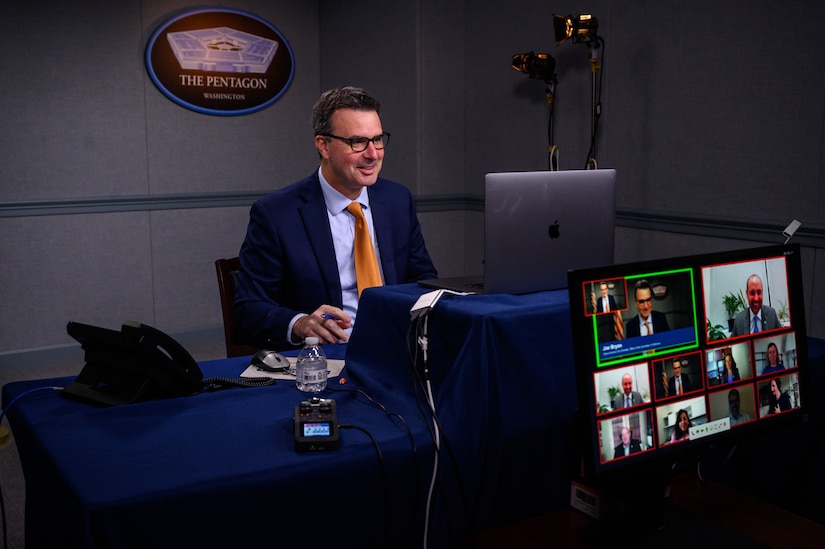
Bryan cited some examples:
In response to climate change, DOD is working to become more energy efficient and independent, Bryan said.
For instance, some bases are becoming more energy efficient by bringing energy storage and distributed generation inside the installations, using energy derived from landfill gas and solar, he said.
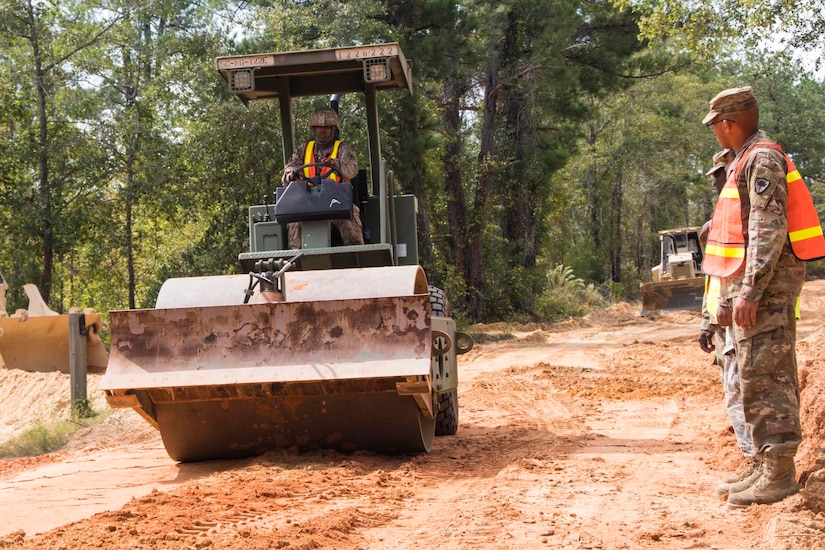
About two-thirds to three-fourths of DOD energy is consumed by systems like airplanes and ships, not facilities on installations, he noted.
"We know that we're not going to get a free pass to push fuel into theater; so we can't be aggressive enough in reducing operational energy demand," he said about the need to ship fuel overseas to power planes, ships and vehicles.
Bryan cited several ways DOD is reducing operational energy demand, including deploying hybrid-electric tactical vehicles, making engine improvements on ships so less fuel is consumed and reducing airplane drag to improve fuel efficiency.

"These investments are a priority because they're great for the mission — and they're quite good for the climate, as well," he said.
President Joe Biden has made domestic production of lithium-ion batteries a priority, Bryan mentioned. That investment is closely tied to electric vehicle deployment in the federal vehicle fleet, including DOD's vehicles.
"The commercial EV [electric vehicle] industry is actually critical to DOD capability. The scale and shift to electrical transportation is massive and fast," he said.
Currently, China dominates the lithium-ion battery sector, and that's a problem since military capability depends on batteries, he said.
The Navy alone has 2,000 to 3,000 systems that rely on lithium-ion batteries. Future capabilities — from unmanned systems to directed energy weapons — all rely on lithium ion, he said.
"We need the commercial EV industry to drive supply chain investment back to the United States," he noted.
The aircraft carrier USS Theodore Roosevelt steams past Seattle and Mount Rainier on its way to Naval Base Kitsap in Bremerton, Wash., July 22, 2021.
July 26, 2021 | BY David Vergun , DOD News
To deter China and Russia from possible future aggression, the Defense Department has come up with a concept known as "expanded maneuver," the vice chairman of the Joint Chiefs of Staff said today.
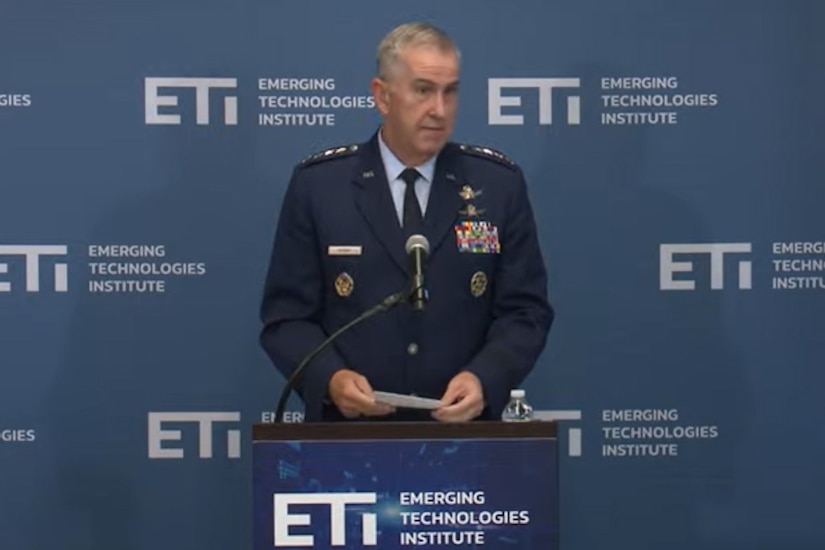
Speaking at the National Defense Industrial Association's Emerging Technologies Institute, Air Force Gen. John E. Hyten said expanded maneuver involves understanding how adversaries can operate in all domains and how to stop them while protecting DOD and coalition forces, he said, noting there are four functional battle areas within expanded maneuver.
The first involves contested logistics. The last time logistics from the U.S. to overseas locations were contested was World War II in the Pacific and European theaters of operation, he said.
Logistics is really difficult to do in a contested environment, he said. Fuel, munitions and other materiel doesn't just show up magically on a remote Pacific island.
"Contested logistics has been an area of rich study, rich conversation, and we're changing our entire logistics approach because of it," he said.
Joint fires is the second functional battle area. In the joint warfighting concept, fires come from all domains and from all services with no restrictions, Hyten said.
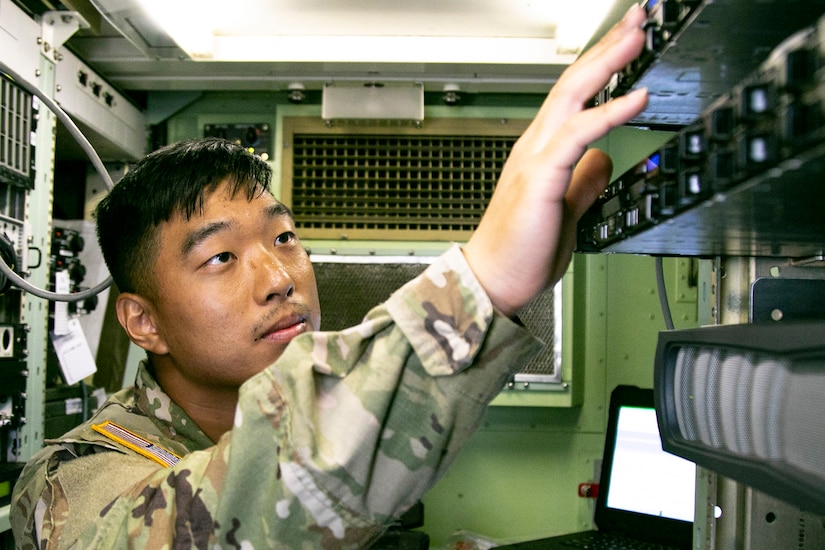
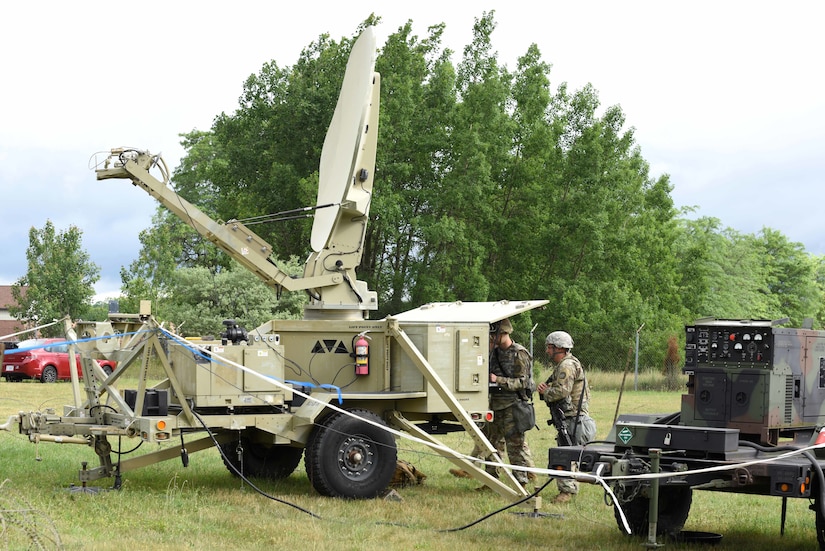
The idea for this concept is that the adversary can't figure out where fires are coming from, and they have no way to defend themselves against that, he said.
"That's a purely aspirational requirement, but I hope everybody can see that if you could do that you would change the equation on any future battlefield," he said.
"Now, you have to figure out what is affordable, what is practical, what can you do, where can you bring it from, who can have it. All those kinds of things you have to be able to work out but you should never limit yourself as you begin a concept with what you don't think you can do. So, fires need to come from everywhere, all domains, all services, kinetic and non-kinetic," he said.
The third element is joint all-domain command and control. Command and control links everything together and allows a commander to understand exactly what's going on in the battlespace, he said.
Data has to flow everywhere, he said. "The goal is to be fully connected to a combat cloud that has all information that you can access at any time, any place … to be able to act quickly on that."

However, access to data might be denied in a threat environment, he said.
"So, you have to figure out how to operate once again with mission command — things that we learned as young lieutenants — how to operate with real centralized control but decentralized execution when you're disconnected."
The fourth is information advantage. This involves connecting systems and people seamlessly with each other and enabling interoperability across the joint force and with allies and partners, he said.
The Joint Requirements Oversight Council is heavily invested and involved in making this all work and enabling the services to move faster in that direction, he said.
Air Force Tech. Sgt. Maryanne Armada, left, and Air Force Staff Sgt. Sandra Thilberg check in Japanese employees who are getting their second dose of the COVID-19 vaccine at Kadena Air Base, Japan, July 16, 2021. The vaccination initiative has helped 1,100 Japanese employed by military installations across Okinawa to get fully vaccinated.
Army Spc. Mariah Ledesma, left, and Army Spc. Desiree Castro prepare food for the homeless at a food bank in Flagstaff, Ariz., July 22, 2021. Ledesma is an ammunition specialist assigned to the Arizona Army National Guard's 2-285th Assault Helicopter Battalion; Castro is a mechanic assigned to the 860th Military Police Company. The Arizona National Guard has activated more than 750 guardsmen to support the community during the COVID-19 emergency.
Marines conduct low-light, live-fire drills aboard the USS New Orleans in the Solomon Sea, July 14, 2021.
Air Force Tech. Sgt. Tyler Alexander teaches children about police equipment and how security forces execute the mission safely during an event at Royal Air Force Mildenhall, England, July 7, 2021.
July 26, 2021 | BY Jim Garamone , DOD News
This is the secretary's second trip to the Indo-Pacific region and shows the importance the administration places on the ''priority theater,'' said a senior defense official traveling with the secretary.
Austin will speak Wednesday at the 40th anniversary Fullerton Lecture in Singapore.
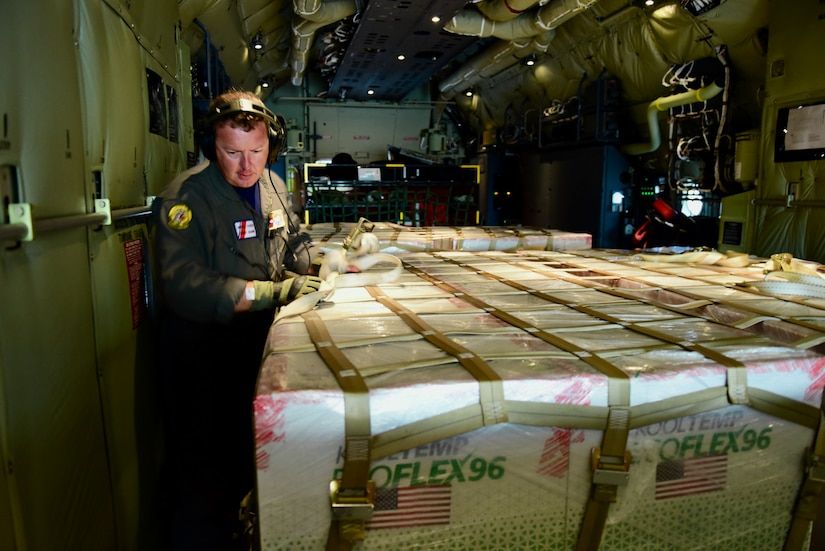
''We want to really drive home the point that we think that the U.S. is a reliable partner for our Asian partners and that we have consistently been there when it counts,'' the official said. ''So, past, present or future, when our partners have been in need, the United States has consistently showed up.''
One example is the aid the United States is providing during the current COVID-19 pandemic. At last month's G7 summit, the U.S. and G-7 leaders pledged more than one billion safe and effective COVID-19 vaccines to accelerate global coverage. According to the White House website, since 2020 the G-7+ has committed to financing and providing about 2.3 billion vaccines for the world. The United States is providing nearly half of that support and is the single largest COVID-19 vaccine donor in the world. This 2.3 billion total includes support for expanding local production capacity around the world to add more than a billion doses to the global vaccine supply by the end of 2022.
At the summit, the United States committed to purchase and contribute to Gavi, or in support of COVAX, 500 million doses of the Pfizer BioNTech COVID-19 vaccine, with delivery beginning in August 2021, as its portion of about half of the overall G7+ commitment, according to the White House. The U.S. will allocate these doses to 92 low and lower-middle income nations around the world. This is the world's largest-ever purchase and donation of vaccines by a single country.
The secretary also wants to make the point in Southeast Asia that the U.S. presence has been a stabilizing force and has made the region more stable, more secure and more prosperous, the official said. It is a region that embraces the need for fair rules of the road. ''The U.S. has a track record here, and we stand by it.''
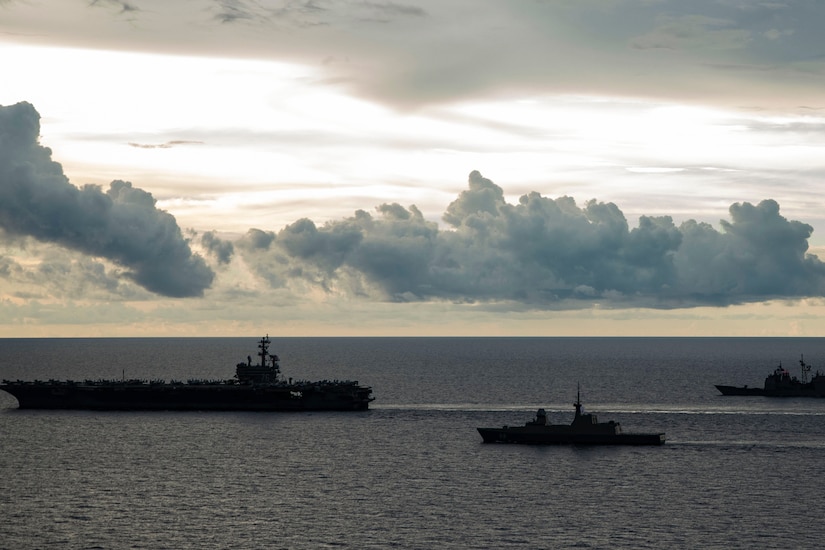
The situation in the South China Sea makes countries in the region worried that these rules are being eroded, the official said. ''You're going to see us be very firm in stating that we believe that all countries ought to be playing by the same rules; that no single country ought to get to determine the rules for other countries; and that might doesn't make right in this part of the world,'' the official said.
Austin is also expected to speak with allies and partners about the idea of integrated defense. The United States must update its capabilities to ensure conflicts don't break out. ''We have to update our capabilities, our concepts of operation, and our presence in the region in order to maintain that deterrence,'' the official said.
But this has extended into the new domains of space and cyberspace, and this needs allies and partners to cooperate. ''This is going to be a major point of conversation in how we work collectively with our allies and partners to continue to deter aggression or conflict,'' the official said.
Austin will emphasize that the U.S. effort in the Indo-Pacific – and around the world – is a whole of government approach. Diplomacy will have the lead in many aspects of the policy with DOD as a supporting pillar.
Austin will also go to Vietnam and the Philippines before returning to Washington.
A National Guardsman climbs a rope wall on the confidence course during the 2021 Army National Guard Best Warrior Competition at Camp Navajo Military Reservation, Ariz., July 21, 2021.
July 24, 2021
SECRETARY OF DEFENSE LLOYD J. AUSTIN III: Well, it has been a terrific day and I want to thank Senator Sullivan for accompanying me today. I know how committed he is to our national security and to keeping our capabilities sharp here in Alaska. I think the only thing that he cares about more than those capabilities are the men and women serving here and their families. And we had a chance to speak with some of them today, thanking them for their service and for what they do every day to help defend this nation. It is impressive. They are impressive.
Now I also come away from this visit with a few takeaways. First is a
keen reminder of just how strategically important Alaska is to our
national security and to homeland defense. We are an Indo-Pacific nation
and we are an Arctic nation. And here in Alaska those two critical
regions intersect. This is where we can project power into both regions
and where we must be able to defend ourselves from threats coming from
both places. It's also where we can better posture ourselves and prepare
for climate changes that will impact our future.
And when we talk about strategic competition, well, the Arctic is one of those places that is ripe for it. As the permafrost melts, the Arctic will increasingly become a theater for resource competition and even instability. And we need to stay ahead of that. I was impressed by the Army's Arctic Strategy and the thinking that they are applying to operational concepts here. I also came away with a better understanding of the capabilities that we deploy and permanently base here, and you can see many of those capabilities as you look around here.
From fifth generation strike aircraft to integrated air and missile defense and the exceptional training ranges to include the Joint Pacific Alaska Range Complex, there's a diverse set of options that we can employ and I intend to make sure that we keep them as lethal and as ready as we can. And that's really the last impression that I took away from my time here, the need for continued readiness and modernization.
I was impressed by the training that goes on, from missile defense exercises to the Red Flag Exercise to the cold weather and mountain warfare training that the Army conducts at the Northern Warfare Training Center. It goes without saying that this is a harsh environment, but as I said, it's a critically important region. And we must continue to hone the skills our soldiers and airmen learn in Alaska's unique training environment.
We must also invest appropriately in the infrastructure needed to keep them ready and to keep them vigilant. And I'm committed to doing that and to working with the services to make sure that we adapt and modernize our training and the tools that we give our troops up here.
And that's really the last thing that I would like to address, our people. I'm mindful of the stress that they're often under and I'm deeply concerned about the suicide rates not only here but across the force. As you've heard me say before one loss by suicide is too many and while we're working hard on this problem, we have a lot more to do. And I believe that has -- it has to start with removing the stigma attached to mental health issues.
Mental health is health period. And we have to approach it with the same energy that we apply to other -- any other health issue, with compassion and professionalism and resources. And so if you're hurting, there are resources available. And I know that our leaders here are committed to making those resources even more accessible and available.
My first priority is to defend this nation. And I've seen a lot of things today that help us accomplish that goal. But key to achieving it is taking care of our people, taking care of each other. And that was one of my messages to the men and women that I spoke with today. We need to look out for one another. And as I promise, I would be looking out after them in every way possible.
And so with that, I'll take some of your questions.
PRESS SECRETARY JOHN F. KIRBY: Idrees?
Q: Secretary, if I could ask two questions on Afghanistan. First, there is a report of a strategy of the Afghan forces (inaudible) consolidating around strategically important parts of the country and locations. Do you think that's going to help stop the gains made -- being made by the Taliban? And secondly, could you provide us with an update on any further locations you've picked for SIV (inaudible)?
SEC. AUSTIN: So you've -- you've correctly described what the Afghan leadership is doing right now. They are consolidating their -- their forces around the key population centers. In terms of whether or not it will stop the Taliban, I think the first thing to do is to make sure that they can slow the momentum and then -- and then be able to put themselves in a position where they can retake some of the gains that the Taliban -- some of the ground that they've lost.
So I think -- I think, from my engagements with the Afghan leadership, they are committed to that. And so, we look forward to them making progress. They have the capabilities, they have the capacity to -- to make progress and to really begin to blunt some of the Taliban's advances. But we'll see what happens.
Q: This idea of Afghans making any progress (inaudible)?
SEC. AUSTIN: Well, we continue to work on the SIV issues. You've also heard me say that I believe it's one of our moral obligations to help the people who have helped us. DOD is fully in support of the -- of the State Department's effort to address this issue. And, of course, our focus has been on identifying places where we can -- we can house SIV applicants as they go through the process.
Our immediate focus is on making sure that we've set up all the things that are necessary to support the (inaudible) that are coming to -- very soon to Fort Lee, Virginia. We're well on the way to having all the pieces in place to support that. And I truly believe that that will be a very successful and smooth operation.
MR. KIRBY: Sure, go ahead.
Q: So (inaudible) Alaska, I guess with (inaudible) taking over the Department of Defense, what is your vision for Alaska and what role does Alaska play in your vision for the northern (inaudible)?
SEC. AUSTIN: Well, oh thanks, I think you heard me say in my statement that this is a very critical place on the -- on the globe. It is the intersection of the areas of responsibility of a couple of combatant commands, you know, the Indo-Pacific Command, which is really important to us, as well as Northern Command. It truly is a place where we think that as we continue to -- to develop our capabilities here, it will certainly help us in our efforts to -- to create capacity and capability that allows us to do what we set out to do in increasing the competitive edge with adversaries like -- like China and Russia.
Q: Would that potentially include more soldiers and and airmen being transferred and stationed in Alaska?
SEC. AUSTIN: Well, you've seen us increase our capability up here recently with the arrival of additional F-35s. And we're in the process of building out the capabilities to support that effort. And, of course, we've already announced that and I don't have any further announcements to make today. I will just point to the fact that I'm really proud of the people that are up here working hard every day to create a world-class training environment and a world-class capability, again, that gives us additional capabilities to protect this nation and also to -- to increase our competitive edge against some of our adversaries
MR. KIRBY: (inaudible)
Q: (inaudible) two questions, first one about Iraq, ongoing discussions the role of U.S. forces in Iraq. So are there American combat troops in Iraq currently? And how will the troops' roles be changing?
SEC. AUSTIN: Well, as you know, Prime Minister Kadhimi is in Washington as we speak. He will meet with the president on Monday. I won't get ahead of any discussions that he and the president will have. I would just remind you that we are there at the invitation of the Iraqis. And that -- and we're there for a specific (inaudible) and that is to help train, advise, and equip them to -- to do things such as countering ISIS, which has been a threat throughout and we certainly don't want to see ISIS redevelop additional capability.
You've heard Prime Minister Kadhimi say that he is very grateful for the -- for the support that we've given them in the past. And he certainly looks to benefit from that -- that support going forward.
Q: And then to follow up, do we (inaudible) the troops in Iraq right now? Does the U.S. military call the troops "combat troops" currently?
And then on Somalia, we've noticed that there was a six-month gap in strikes in Somalia. There were dozens under the Trump administration each year and then they stopped. When President Biden became commander-in-chief and you became Secretary of Defense. Does this new strike -- new strikes that just started now, do they mean that we will continue to see strikes against al-Shabaab? And what was the reason for that six month gap?
SEC. AUSTIN: So I've lost count, is that two questions or three questions?
Q: Very long (inaudible) combination.
SEC. AUSTIN: In terms of the types of troops that we have in -- in Iraq, you know, all of our troops are capable of doing multiple things. And certainly, you know, we -- we task our combat troops, our troops that are capable of conducting combat operations with training, advising, and assisting. And so -- so we're capable of doing a number of things and -- and it has been that way throughout. You've seen us do that across -- around the globe. And so I think trying to make that distinction is very difficult. But I would say that the key is -- will be, you know, what we're purposed -- what we're tasked to do at any one point in time.
In terms of the strikes in Somalia, General Townsend has always had the authority to employ force to protect our forces and also to protect our partner forces. As you may know, we've been working with -- with partner forces in Somalia to counter the activities of al-Shabaab, which is an al Qaeda affiliate. And most recently what has happened is our partner forces have increased their op tempo and they have been pushing back on -- on al-Shabaab in a more significant way. And the result of that is some engagements that were fairly intense. And we conducted those strikes to support our partner forces there.
John.
MR. KIRBY: Jim?
Q: Hi, Mr. Secretary. One of the things that you really emphasized since taking office is the outreach to friends and allies, not just in the Indo-Pacific, but around the world. There isn't a day it seems that goes by without you, because of COVID, reaching out on the phone. And you've had three or four trips to these areas. I'm just wondering why -- why should the average American care about this aspect of security policy, that -- that outreach to friends and allies? And -- and what does that outreach to these friends and allies mean to potential adversaries?
SEC. AUSTIN: Well, as -- as you know, Jim, we have -- everything that we have done in the past has been a part of -- as a part of a team, a coalition. It's who we are. It's how we fight. It increases our capability and capacity in -- in ways that are very difficult to describe, but it magnifies our capabilities. And it's something that we're very, very proud of. And, you know, we -- we look to continue to develop our relationships with like-minded partners and allies, those that share our values, those that look to do things like ensure that we have -- that we follow in an international rules-based order which -- which I think is very, very important to us.
And so it is our strength. And I would point to the fact that others don't have those kinds of -- don't enjoy those kinds of partnerships and alliances. And if you look at a China or Russia, they don't have the the ability to get to align themselves with -- with like-minded partners to the degree that the United States does. It magnifies our capability in ways that are really difficult to describe because they are so significant.
John?
MR. KIRBY: (inaudible)
(CROSSTALK)
Q: But does it encourage you that you're looking right over there and it's an Australian F-35 and it's an American (inaudible) and they're obviously (inaudible)?
SEC. AUSTIN: It's absolutely encouraging. It's the way that we operate. We train with each other. We share common practices and policies. And it's how we're going to fight going forward. And, again, it really increases our capability by orders of magnitude.
MR. KIRBY: Last question. Elana?
Q: Yes, sir. With the numbers rising of COVID variants, how concerned are you about it impacting troops? (inaudible) some of the biggest (inaudible)?
SEC. AUSTIN: I'm sorry, I -- because of the background noise I didn't...
Q: Yes, I'm sorry. (inaudible). With recent rise in numbers of the Delta variant, how concerned are you about impacting the troops (inaudible)? More recently (inaudible)?
SEC. AUSTIN: Like the rest of our leadership, like the rest of the world, I remain very concerned about the most recent variant. It is highly transmissible and I would point to the fact, though, that we have worked hard to continue to vaccinate our force. We have at least 70 percent of the force that has gotten at least, you know, one dose of the vaccine. We're going to continue to push -- push hard to ensure that we're making the vaccine available to the force. And we're going to encourage people, our troops, to take the vaccine. It's a very important force protection measure, so.
MR. KIRBY: Thanks very much...
(CROSSTALK)
Q: I just wanted to follow up with that with the Delta variant (inaudible) requirement (inaudible)?
SEC. AUSTIN: It -- right now, it remains voluntary. Our focus is going to continue to be on making sure that our troops have the right information, factual information, that they can talk to their doctors, they have the ability to talk to their families about this vaccine. You know, if you just look at what the vaccine has done across -- across the globe, it's incredibly powerful. And so we think -- you know, I think the right thing to do is to make sure that we continue to encourage our troops to take it.
Thanks so much everybody.
Q: Thank you, sir.